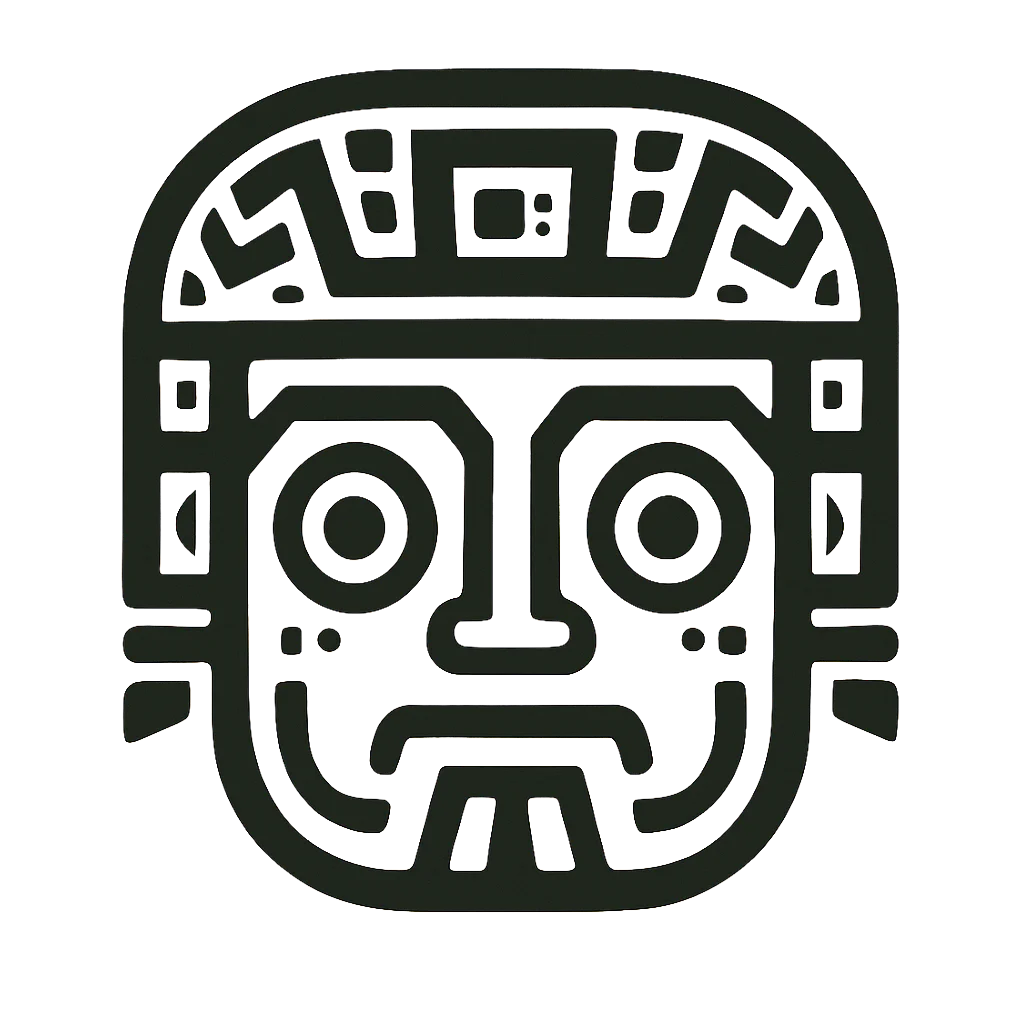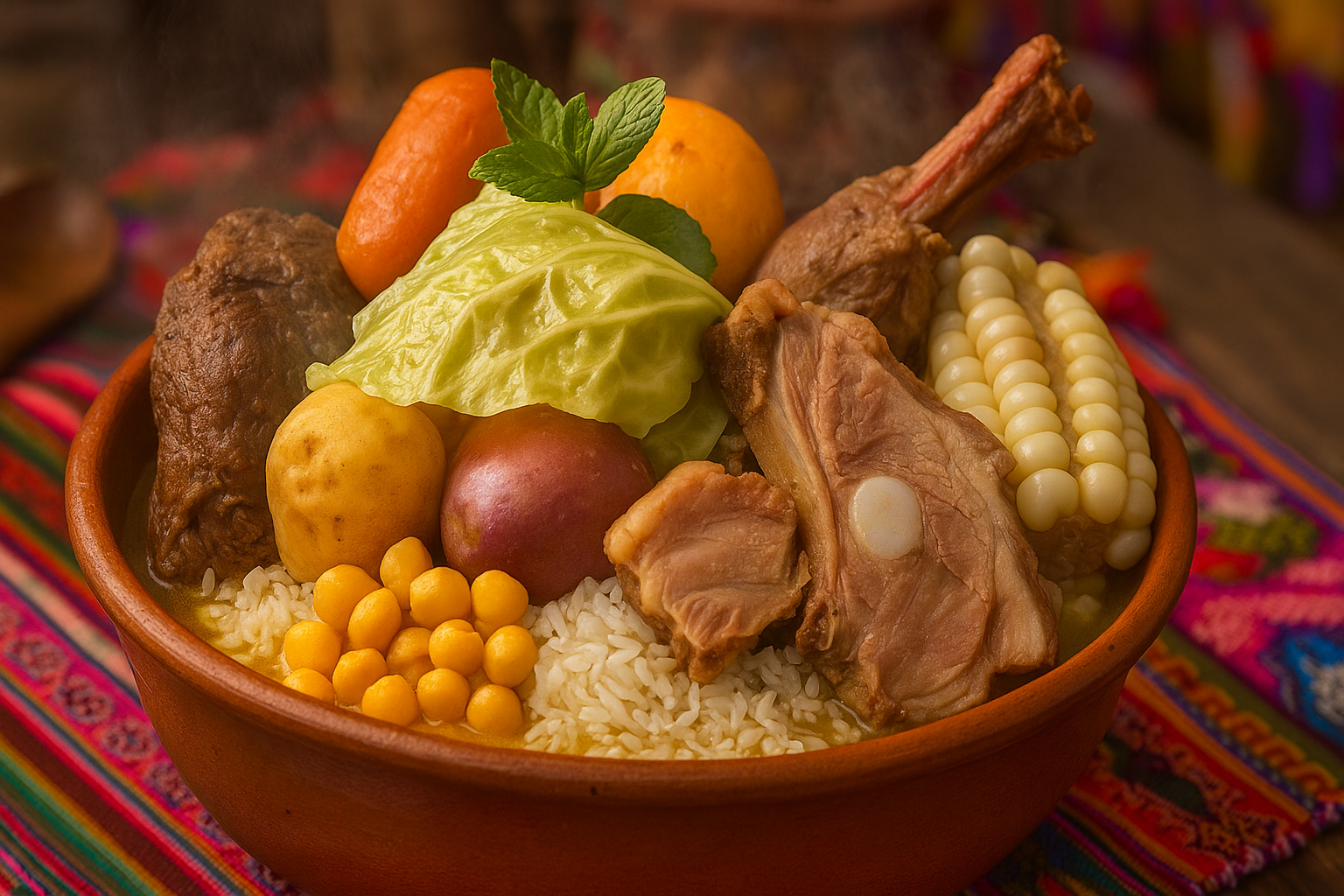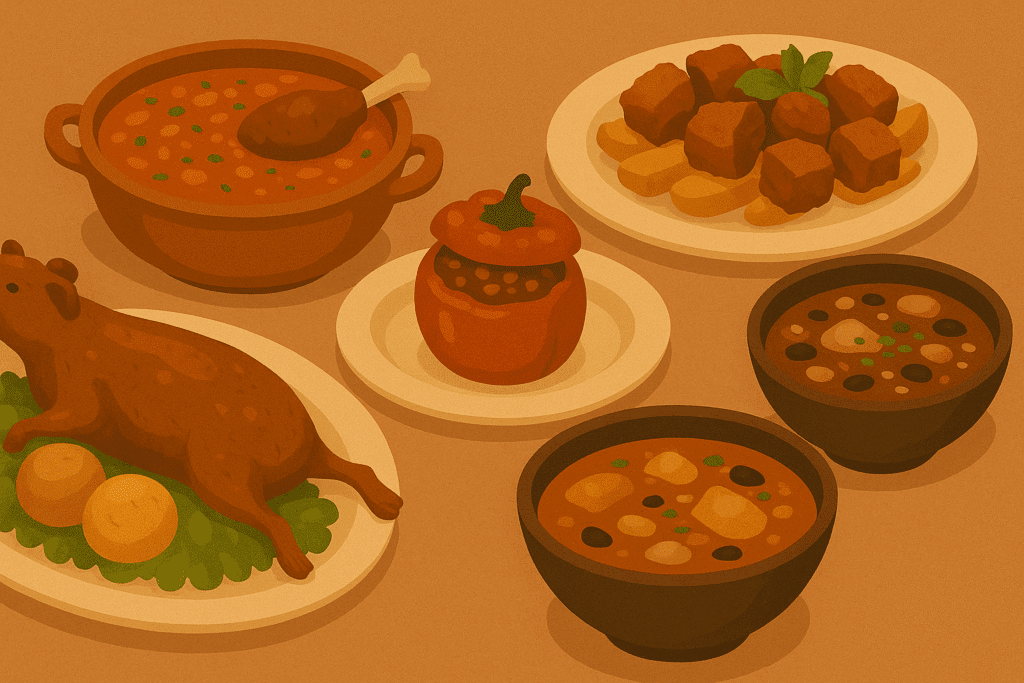Cusquenian Puchero, also called t'impu is an ancestral dish that is only served during the festivities of the Cusquenian Carnival. It is a festive pot where meat, potatoes, cabbage, corn, sweet potatoes and dried apricots are cooked in a slow cooking process that celebrates abundance, family reunion and gratitude to the Pachamama.

📜 What is Puchero Cusqueño?
It's a guiso festivo cocido lentamente, donde conviven carnes, papas, moraya, camote, yuca, mote, orejones y repollo. Todo se hierve con paciencia en grandes ollas comunitarias, y se sirve con orgullo en reuniones familiares, comparsas y almuerzos colectivos.
Su sabor nace del equilibrio entre productos nativos, técnicas coloniales y un profundo respeto por la tierra.
🧬 Timpu History and Origin
The name “puchero” comes from Spanish and originally alludes to the clay container. In Quechua, the term “timpu” means “boiled”, reflecting the slow and careful cooking technique that characterizes the dish.
During the colonial period, the Spanish stew arrived in the Andes and was reinterpreted using local ingredients such as chalona, mote, moraya, native potatoes, and cabbage. Thus, the timpu cusqueño was born, and it is now one of the most anticipated dishes on the Andean festive calendar.
🎭 Culture Importance
Puchero is not just a food, it's a simbol that represents:
- Abundance: The use of diverse and generous ingredients expresses prosperity.
- Family unit: It is cooked in groups and shared between generations.
- Andean Identify: Celebrates the fertility of the earth and honors the Pachamama.
- Closing Ritual: It marks the end of Carnival and the beginning of the Lenten recollection, fusing the Andean and the Christian.
- It represents the final grand celebration before the period of fasting and spiritual reflection, which is rooted in Catholic tradition but reinterpreted through Andean perspectives.
- For Cusqueños, especially those in rural communities and old neighborhoods, puchero symbolizes cultural continuity, where the festive, the spiritual and the culinary merge into a single pot.
🤔 Curiositites of Puchero
- The order of the ingredients on the table represents the Andean world:meat (life), potatoes (earth), and orejones (sweetness of the year).
- Cabbage is so highly valued that some people keep it at home as a prosperity charm..
- Outside of Cusco, it is difficult to find it, since it is prepared only during Carnival, which makes it even more special.
- Although its origin goes back to the Spanish “puchero”, the Cusquenian timpu is a mestizo creation, deeply rooted in the Andean agricultural and festive calendar.
- It represents the final grand celebration before the period of fasting and spiritual reflection, which is rooted in Catholic tradition but reinterpreted through Andean perspectives.
- For Cusqueños, especially those in rural communities and old neighborhoods, puchero symbolizes cultural continuity, where the festive, the spiritual and the culinary merge into a single pot.
📌 Ingredients
This dish needs time, patience and love, like any good tradition.
| 🛒 Ingredients | 📌 Quantity for 4 diners. |
|---|---|
| beef brisket | 1/2 kg |
| Chalona | 1 |
| Lamb's Head (optional) | 1 |
| white potato | 4 |
| moraya | 4 |
| Yucca | 2 |
| Sweet potato | 2 |
| Cabbage | 1 |
| Rice or chickpeas | 1/2 cup |
| Dried apricots | 6 |
| Salt, garlic and oregano | to taste |
🍲 Preparation
- Boil the beef brisket, shallots, and lamb's head (if using) in a large pot with plenty of water. Add crushed garlic, salt, and oregano. Cook over medium-low heat for 2 to 3 hours, until the meat is soft and aromatic. Leave the chalona to soak for 12 hours before cooking.
- In a separate pot of salted water, cook the potatoes, morayas, sweet potatoes, and yucca until tender but not falling apart. Add the cabbage, either whole or cut in half, to absorb some of the flavor of the other vegetables and become soft and juicy.
- Separately, boil the rice or chickpeas (according to preference) and the mote, if not already cooked. Briefly steam or soak the dried apricots so that they are soft when served.
Serve hot with Andean potatoes (boiled or fried), cooked corn, a fresh salad, and a generous helping of homemade uchucuta or ground chili.
✨ Conclusion
The Cusquenian Puchero is a unique cultural and culinary experience. Its flavor, born of time, patience, and family collaboration, speaks to a cuisine that honors the land, history, and community.
Tasting it during Carnival means savoring an ancestral legacy, where the past and present, the spiritual and festive, merge.
👉 If you're visiting Cusco in February, don't miss the opportunity to try it. And if you decide to make it at home, take your time and prepare it with love and respect—that's how tradition is passed down.





